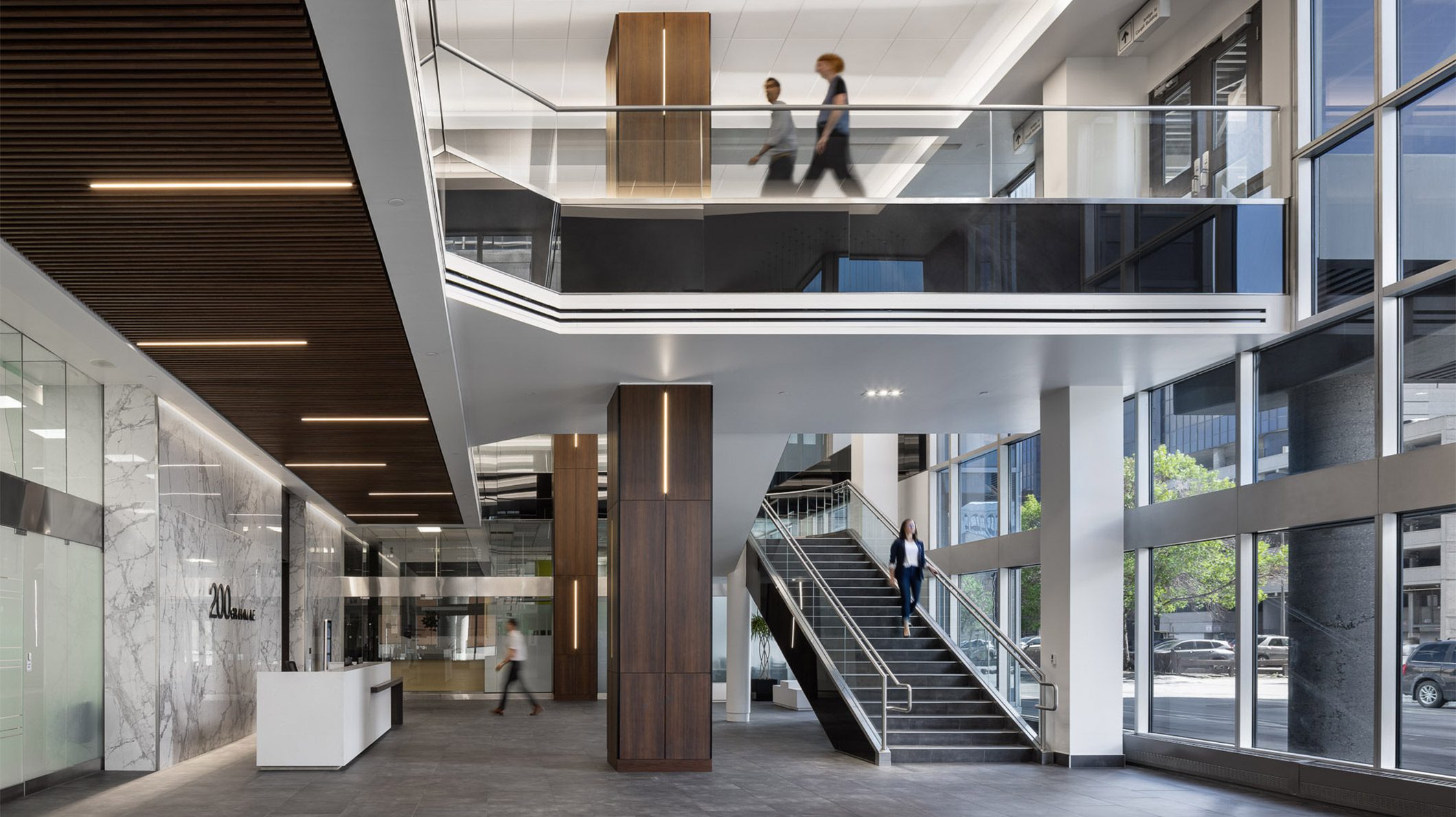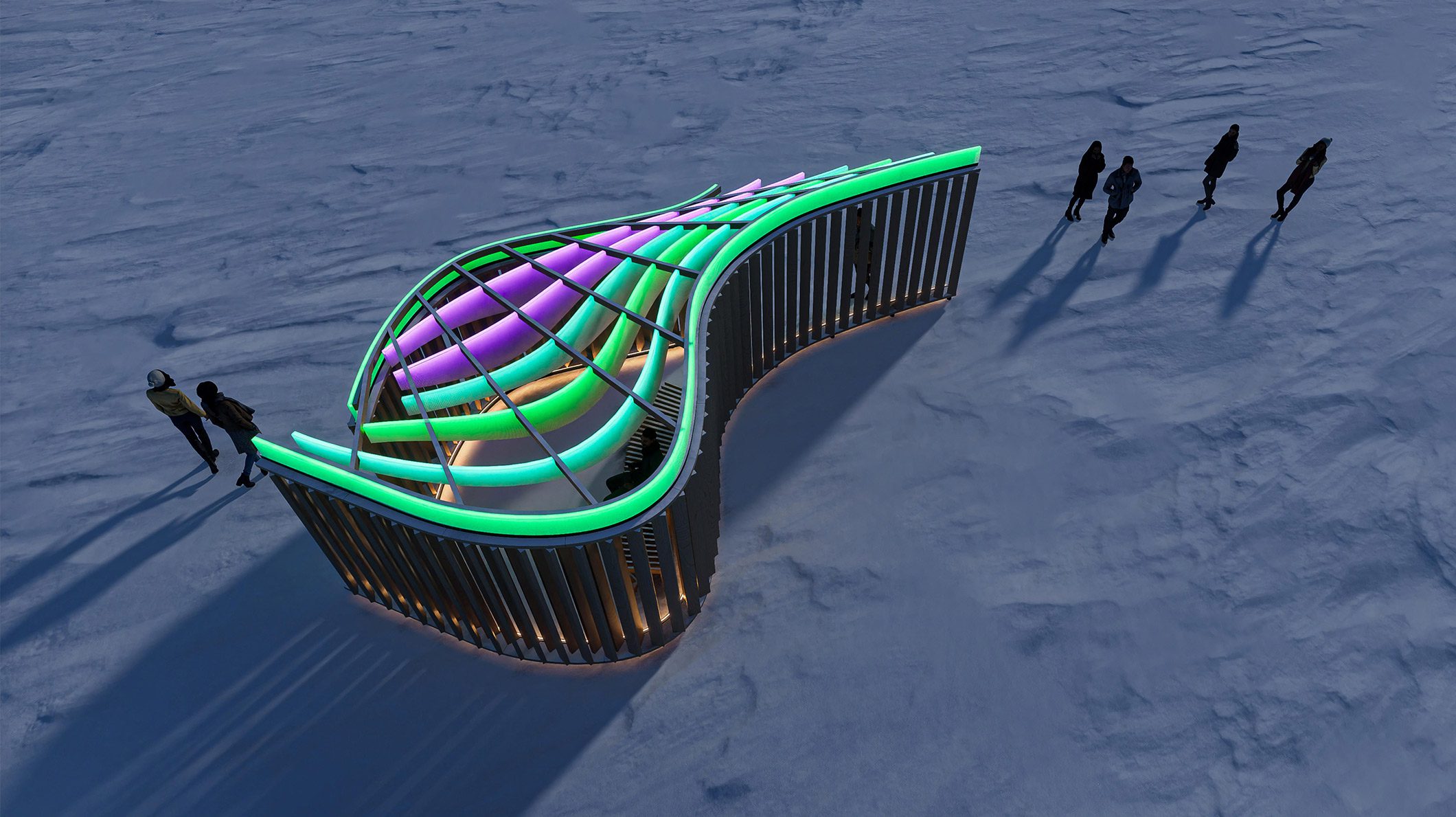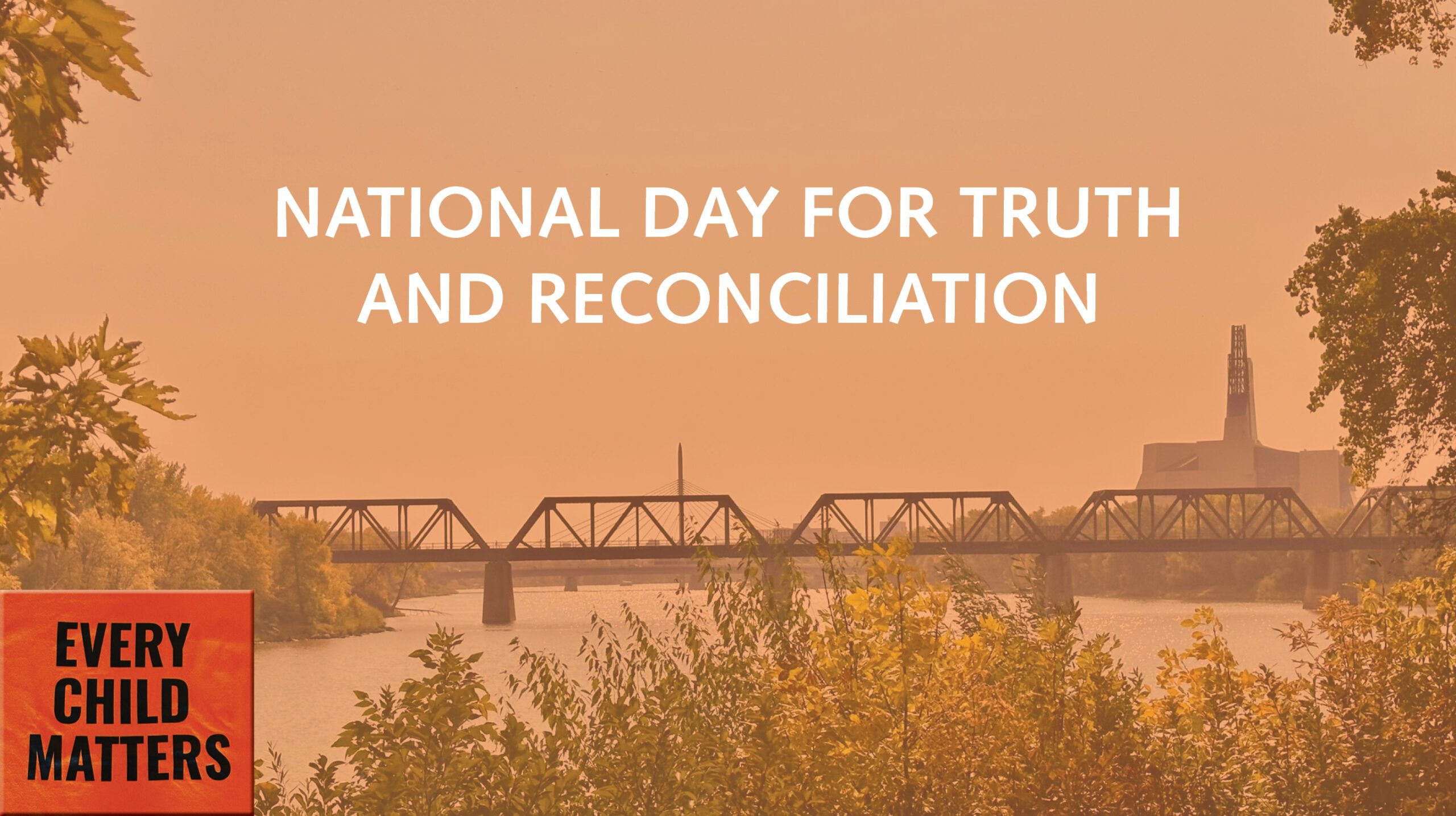Projects
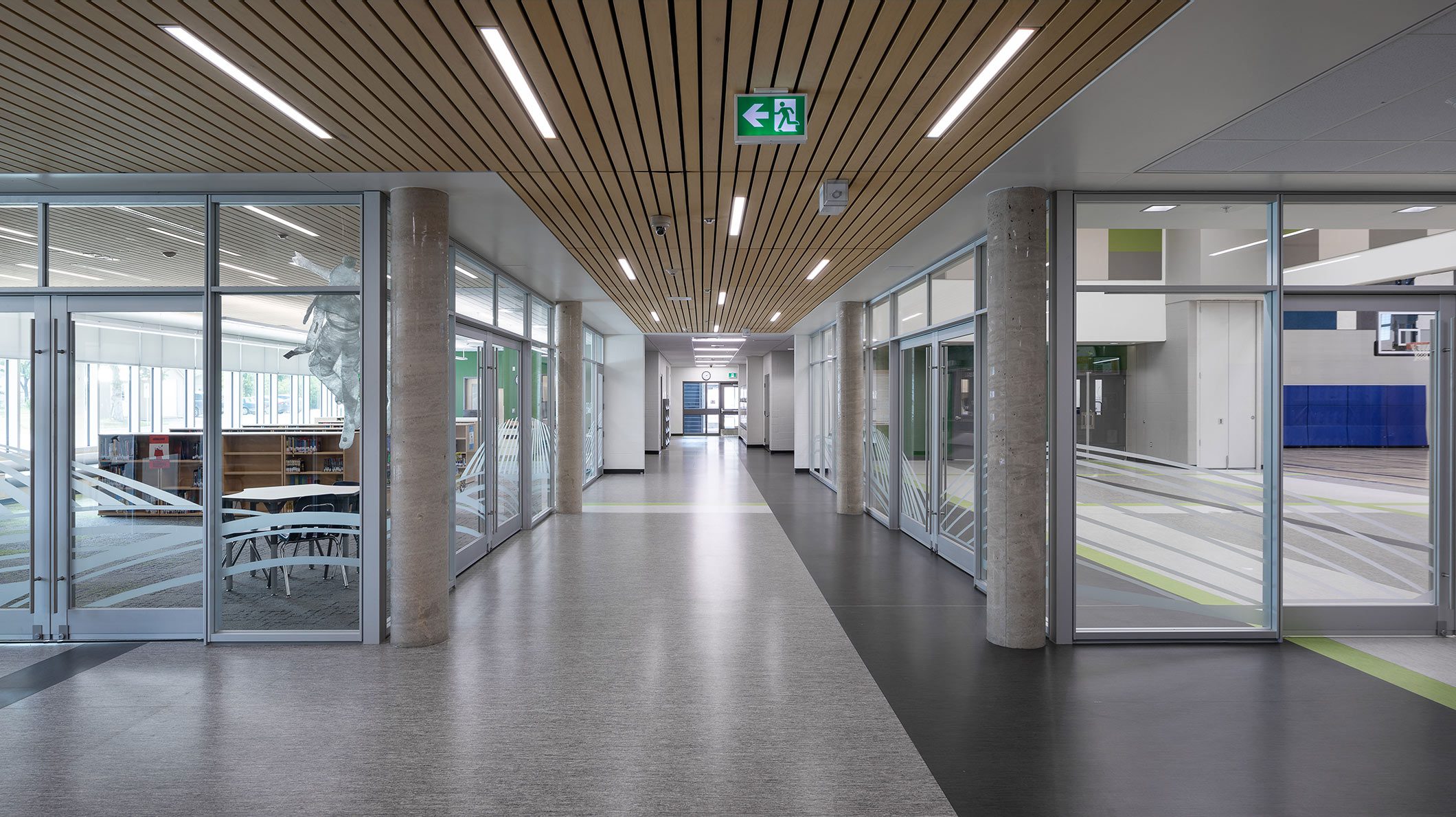

Neepawa Middle School, completed in 2019, achieves LEED Gold Certification through the Canadian Green Building Council Program. The project received 63 points in the globally recognized program to obtain the Gold rating, exceeding the provincial requirement for new schools to meet LEED Silver through innovative design solutions and team collaboration.
Initially a 13,000 sq. ft. grades 5-8 wing connected to the regional high school, the design transformed this learning environment into a fully outfitted, 43,800 sq. ft. Middle School to serve the region. Shaping a vibrant educational campus in the heart of Neepawa, the project pursued a number of key sustainability themes outlined below to achieve LEED Gold and ensure lasting value for a sustainable future.
Sustainable Site Development and Maximized Open Space
• Overcoming the challenge of a compact site, the design strategically configured the addition and a new daycare facility to be able to preserve exterior community courts and playfields to optimize local connectivity, access to the outdoors and future growth flexibility.
• A variety of low-emitting transportation options and amenities were integrated on site, including an off-street bus queuing and staging area, ample bike storage and three EV charging stations.
• Extensive glazing in all education and recreation spaces as well as the expansive courtyard dedicated to student activity and collaboration support plentiful access to natural light and a direct connection to the outdoors.
Water Efficiency
• Within the courtyard, a rain garden was installed to help collect and filter storm water runoff from the roof, deck and other hard surfaces to be reabsorbed on site, reducing water use.
• For the facility as a whole, water use reduction was evaluated at 40.55%, with the help of water efficient landscaping and an improved site drainage strategy.
Innovation in Design
• Glazed operable wall systems in the library and multi-purpose room allow for flexibility and broader connectivity of public areas and opens the interior of the school for daylight to reach deep into the floorplate.
• 81.73 % of the facility’s electrical demand over a two-year cycle is provided by green power.
Sustainably sourced materiality
• The project prioritized certified wood with use of Kebony decking – a sustainable, highly durable and thermally treated wood that requires minimal maintenance and offers low lifecycle costs.
• Regional materials were leveraged throughout to reduce the project’s carbon footprint, highlighted by the abundant use of Manitoba Tyndall Stone that defines learning installations at the entry and frames the courtyard and play fields. As part of a “Building as a teaching tool” model, students also visited the local quarry to handpick fossilized sawn and finished stone for use in the project.
Topped with modelled energy savings of 47% annually, Neepawa Middle School represents a holistic approach to sustainable design to enhance quality of life, reduce environmental impact and support cost savings long-term, made possible through the Client’s dedication and the team’s solution-focused approach.
For more details and photos, check out our full project profile.
Through an Integrated Design Approach with the Client, sustainability quickly became a key project driver for the design of this major middle school expansion and renovation.
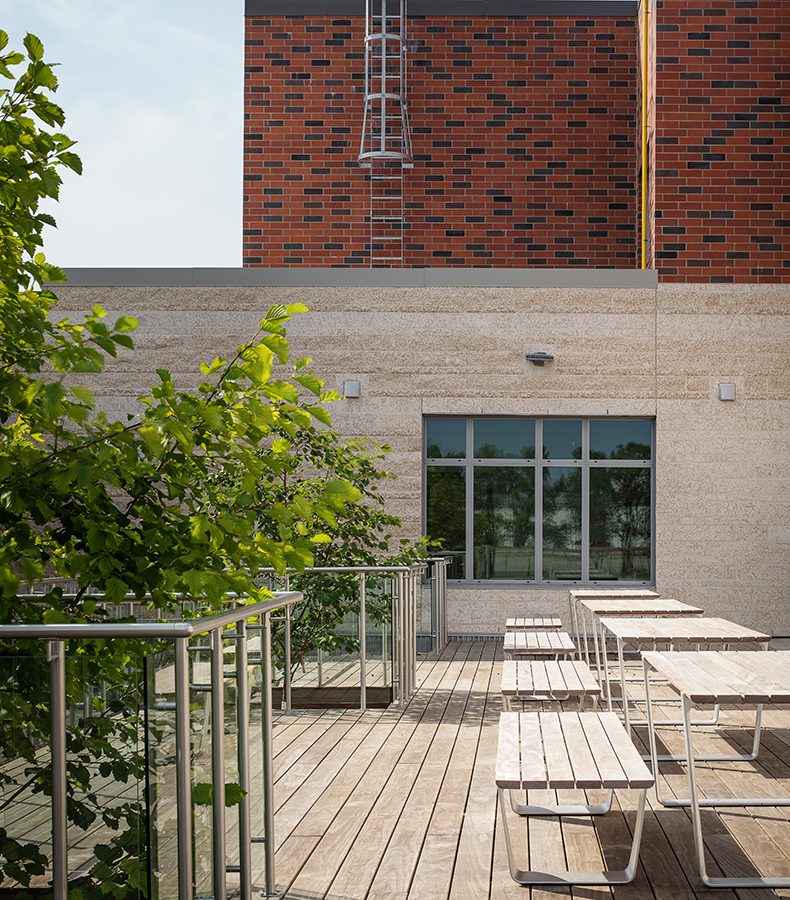

Explore more news

